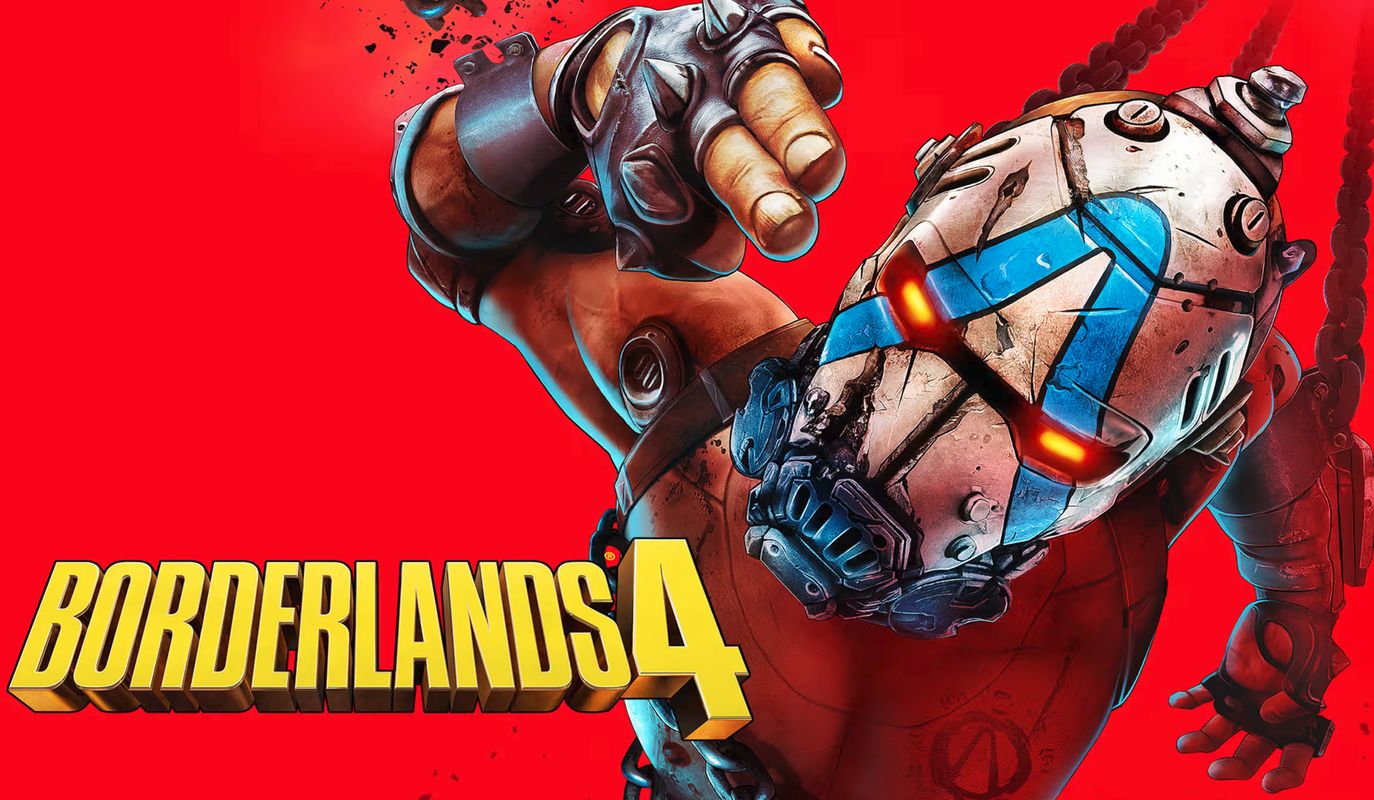
Borderlands has always been about chaos, big guns, and bigger fights. Borderlands 4 sticks to that formula but moves the action to Kairos, a world ruled by the Timekeeper. His grip is tight, with an army of synthetics and implants that let him control people like puppets.
Right away, it feels different. Instead of moving from one zone to the next, you’re in a proper open world packed with factions, side missions, and hidden corners worth chasing down. The new movement options, dash, glide, and grapple, change how fights play out, giving combat a faster, more fluid feel. Pair that with the wild mix of loot and character builds, and you’ve always got a reason to try something new.
The game is still Borderlands through and through: loud, over the top, and full of personality. At the same time, it shows signs of a series learning from past mistakes and taking real steps forward.
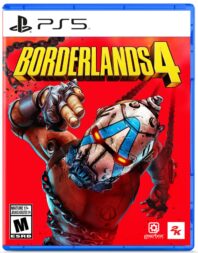
Borderlands 4 Details
Platform(s): PlayStation 5, Xbox Series X|S, Nintendo Switch 2 (available for pre-order), and PC
Developer(s): Gearbox Software
Publisher(s): 2K
Genre: First-person shooter, action role-playing
Modes: Single-player, multiplayer
ESRB Rating: M (Mature 17+)
Kairos under the Timekeeper’s shadow
Borderlands 4 sets the stage on Kairos, a planet dominated by the Timekeeper and his Order. Using implants called bolts, he can seize control of anyone, turning civilians into unwilling soldiers. The setup is darker than past games and makes every encounter with his forces feel like a fight against oppression rather than just another shootout.
The regions of Kairos each carry the scars of his rule. The Fadefields serve as the opening act, a stretch of farmland where communities struggle under the Order’s grip. Terminus Range shifts the tone with harsh mountain terrain and strongholds crawling with loyalists. Carcadia Burn pushes the brutality further with its wastelands and roaming warbands, while Dominion’s sprawling city shows how tightly the Timekeeper controls urban life. Each zone feels different, and all of them link back to the main fight rather than acting as filler.
The story itself balances Borderlands’ trademark humour with a more focused narrative. The writing doesn’t overdo the cheap jokes, and the resistance’s fight against the Timekeeper has weight. He’s a chilling villain, less comical than past foes, but his presence fits the new direction. The Timekeeper’s grip shows up all over Kairos, but Dominion hit me hardest. Mid-fight, he flipped a crowd of civilians into soldiers without warning. One second I was weaving through fire, the next I was staring at people I thought were safe turning against me. It genuinely rattled me.
For a game that usually leans into comedy, that moment felt heavy and gave the fight weight beyond just chasing loot. The structure of taking down lieutenants before the final showdown is familiar, but at least the presentation makes it land stronger here.
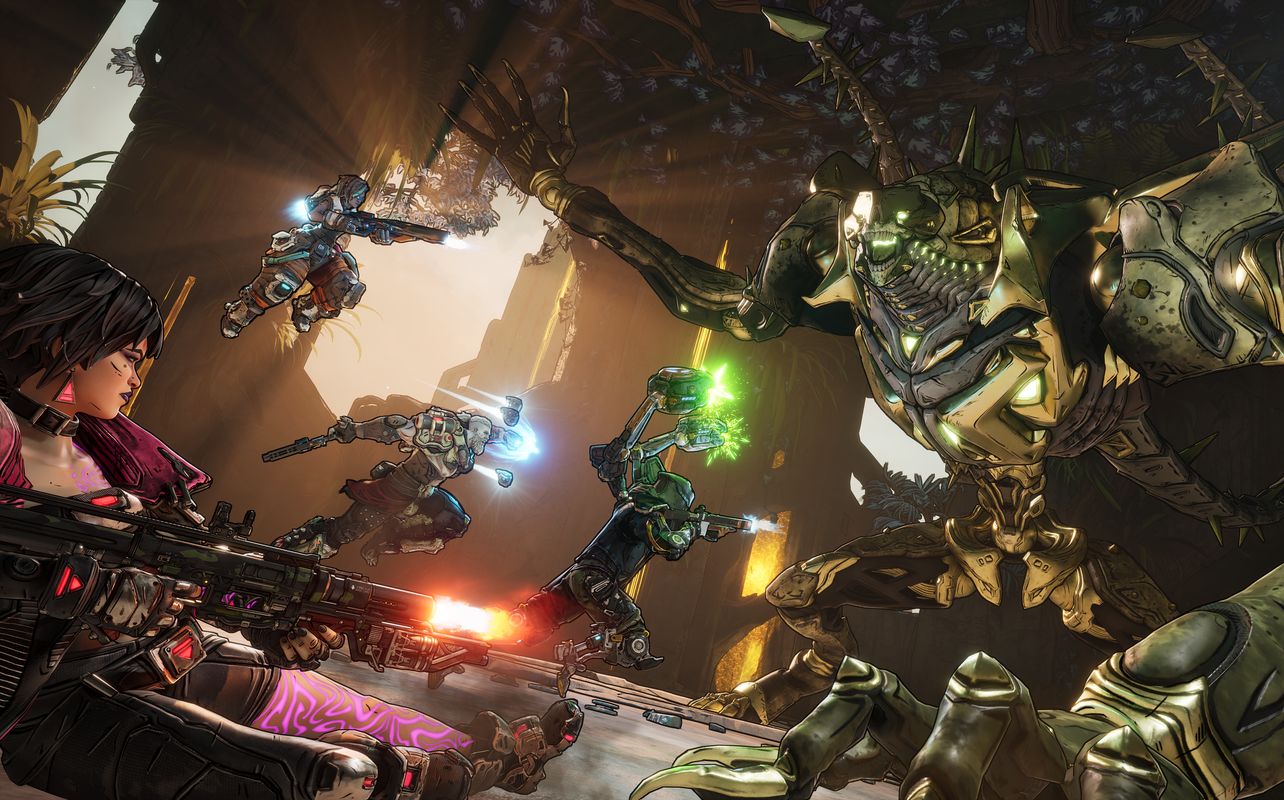
Gunplay and gear at full throttle
Combat in Borderlands 4 feels sharper and faster than ever. Dash, glide, and grapple moves make firefights flow with constant momentum. Gun variety is huge, with everything from pistols that sprout legs to rifles that unload elemental storms. Battles are loud, chaotic, and rewarding. The downside is that fights can sometimes stretch longer than needed, especially when enemy waves feel padded out.
Loot remains the backbone of Borderlands, and here it’s both plentiful and varied. The new licensed parts system means guns roll with unique combinations, encouraging you to try new builds instead of sticking with one setup. That said, I encountered inventory bugs and sorting issues that broke the rhythm, forcing me to wrestle with menus more than I wanted.
Character builds give you plenty of ways to experiment. Each Vault Hunter has three trees with distinct playstyles, and respeccing is painless. I went heavy on corrosion damage with Rafa’s arc knives, slicing through groups with satisfying speed. The flexibility is there, though late-game enemies can feel like damage sponges, dragging fights down. Movement ties it all together, letting you attack from angles the older games never allowed. I remember grappling onto a ledge, hovering above a mob, and tossing a shotgun blast into the crowd before dashing to cover. It felt slick and cinematic in a way Borderlands hasn’t hit before.
Overall, the gameplay delivers the wild fun you expect while finding new ways to move things forward. Still, stretched-out missions, clunky menus, and spongey bosses remind you that not everything hits perfectly.
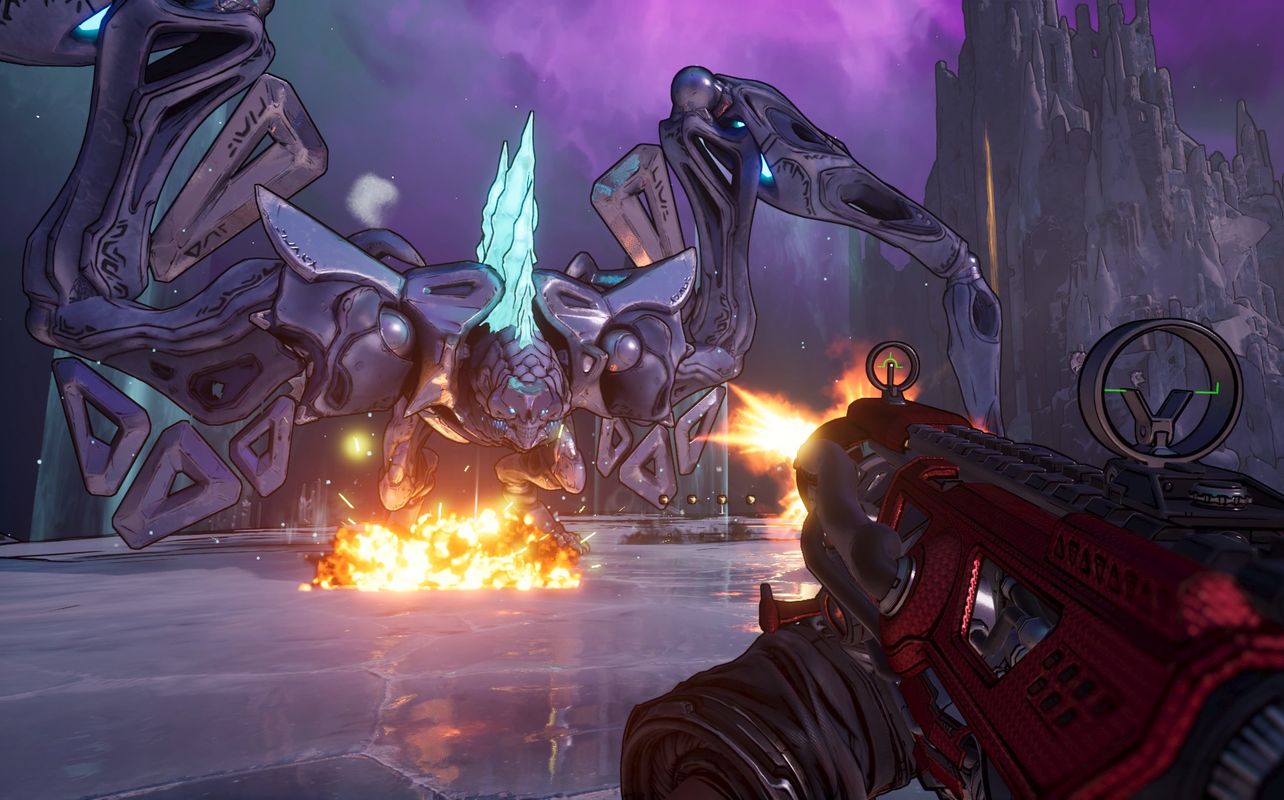
The look and sound of chaos
Borderlands 4 sharpens its trademark cel-shaded style with Unreal Engine 5. Kairos pops with detail, with each region carrying its own flair. The Fadefields stretch wide with farms, Carcadia Burn bakes under harsh light, and Dominion towers with concrete and neon. The mix keeps exploration interesting, though performance sometimes struggles to keep up with the detail. Textures can pop in late, and frame rates dip during heavy action, but overall the upgrade feels worthwhile.
Audio holds up well. Vault Hunters and NPCs throw out lines with better timing than before, and the banter usually lands without dragging on. The soundtrack shifts gears nicely, blasting heavy riffs in fights and easing into quieter tones when things slow down. Guns and abilities sound punchy too, giving the chaos some weight. The mix is not perfect though, as dialogue can get buried under the action. Performance is where things slip, with frame dips in big fights, menus that hitch when scrolling through gear, and the occasional crash breaking momentum. The launch patch helped, but the game is still not as steady as it should be.
I still think back to an early boss intro where the screen froze, graffiti-style text filled the frame, and the music kicked in perfectly. It was slick, stylish, and impossible not to smile at.
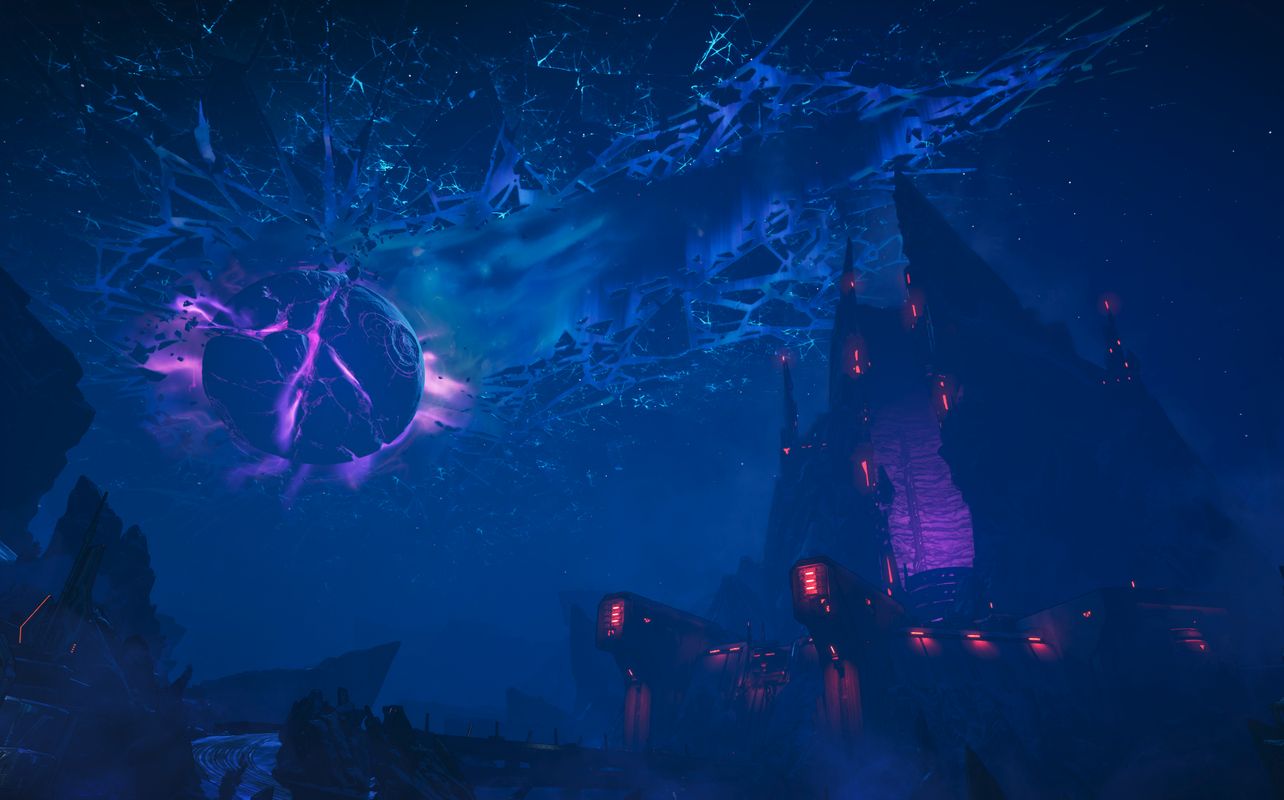
Borderlands 4 is bigger bolder and still imperfect
Borderlands 4 feels like a series both remembering what worked and trying to move forward. Kairos is a world worth exploring, even if the open-world design sometimes leans too heavily on repetition. The mix of regions, from farmland to neon cities, gives the story a stronger stage than before. The Timekeeper is a solid villain, and while the structure of taking down lieutenants is predictable, the writing finds a better balance of humour and weight.
| Pros | Cons |
|---|---|
| Gunplay feels sharper and faster with new movement options like grappling, gliding, and dashing. | Frame dips and performance hiccups show up often in big fights. |
| Each area of Kairos feels different and ties into the fight against the Timekeeper. | Some late-game enemies turn into bullet sponges. |
| The loot system encourages experimentation with countless weapon combinations and builds. | A few missions feel padded with extra waves of enemies. |
| Writing strikes a better balance between humor and serious storytelling. |
Gunplay is still the heart of Borderlands 4. Grappling, gliding, and dashing give fights a pace the older games never had. Weapons are all over the place, and swapping gear just to test a new roll is addictive. Some encounters drag, though, and late-game enemies take too many hits. Loot and builds keep things fresh, but clunky menus and random inventory bugs can pull you out of the action.
Overall assessment of Borderlands 4
Gameplay: 4/5
Graphics: 4/5
Sound: 4/5
Lasting appeal/Replayability: 4/5
Overall rating: 4/5 (80%)
What sticks with me most is a late-night session where I told myself I’d stop after one mission. Three hours later I was still chasing loot, laughing at side quests, and trying a new build. That familiar Borderlands loop is alive and well, even if it’s occasionally slowed by performance hiccups or uneven pacing. Borderlands 4 is not flawless, but it is fun in a way that feels true to the series. The chaos, the loot, and the humor are all here, wrapped in a bigger, bolder package. If you can accept some rough edges, there’s a lot to enjoy.
Click here to see the full line of video game software available at Bestbuy.ca
Click here to see digital video game downloads offered at BestBuy.ca





